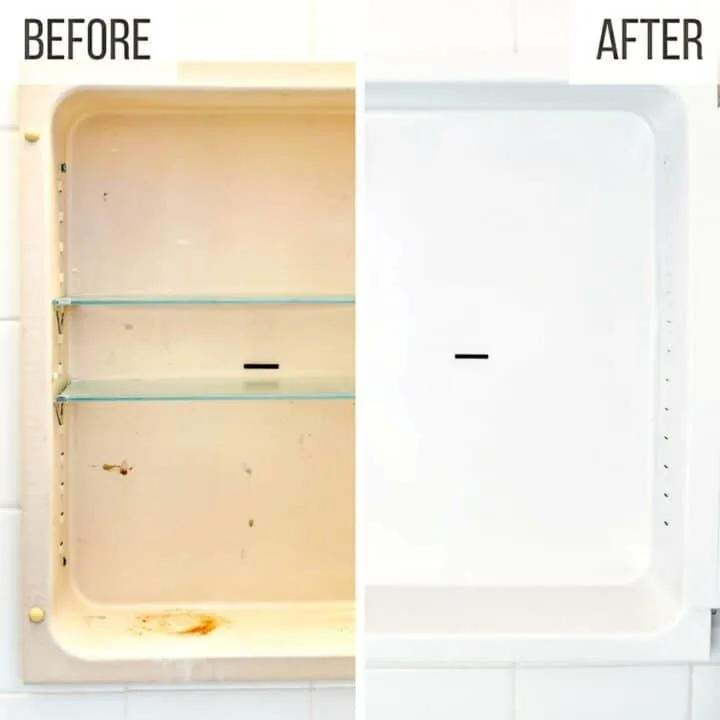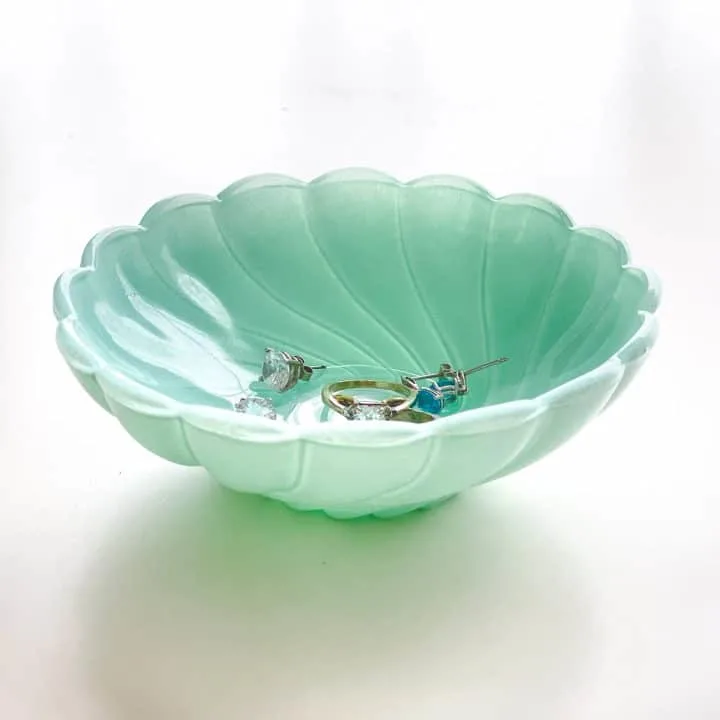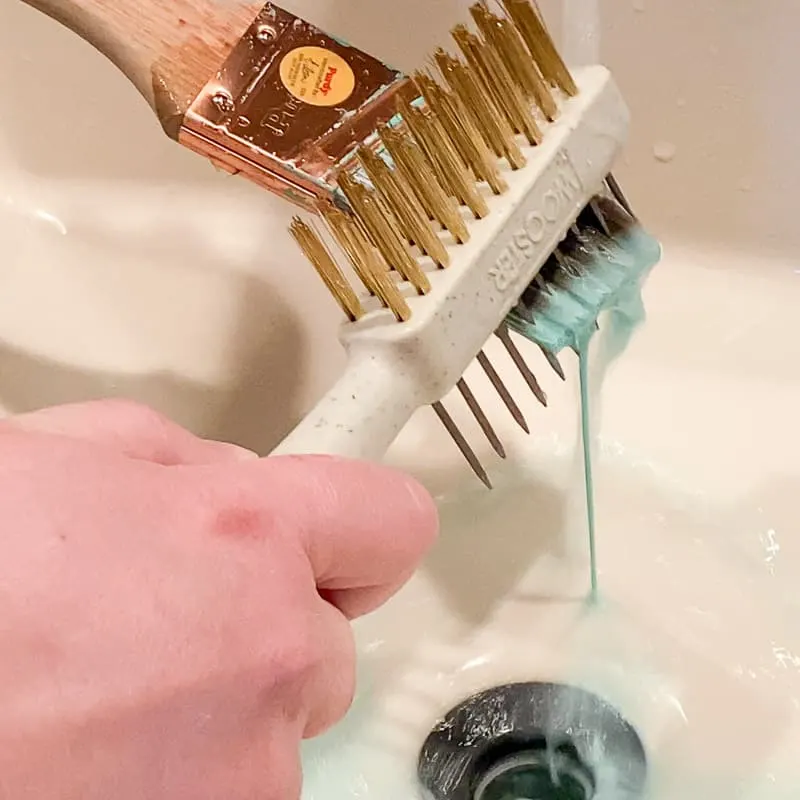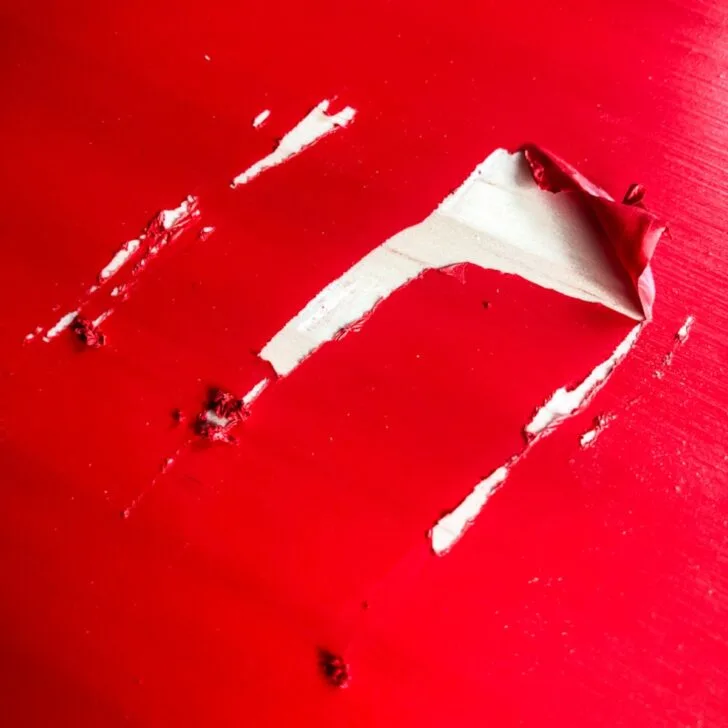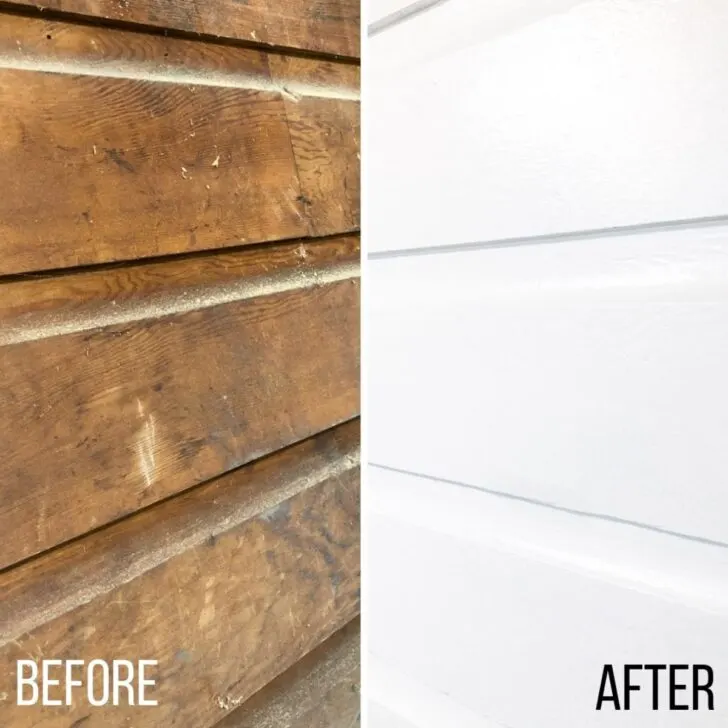Prevent paint from drying out in storage with these handy tips! I'll show you how to store leftover paint so it stays fresh for touch ups!
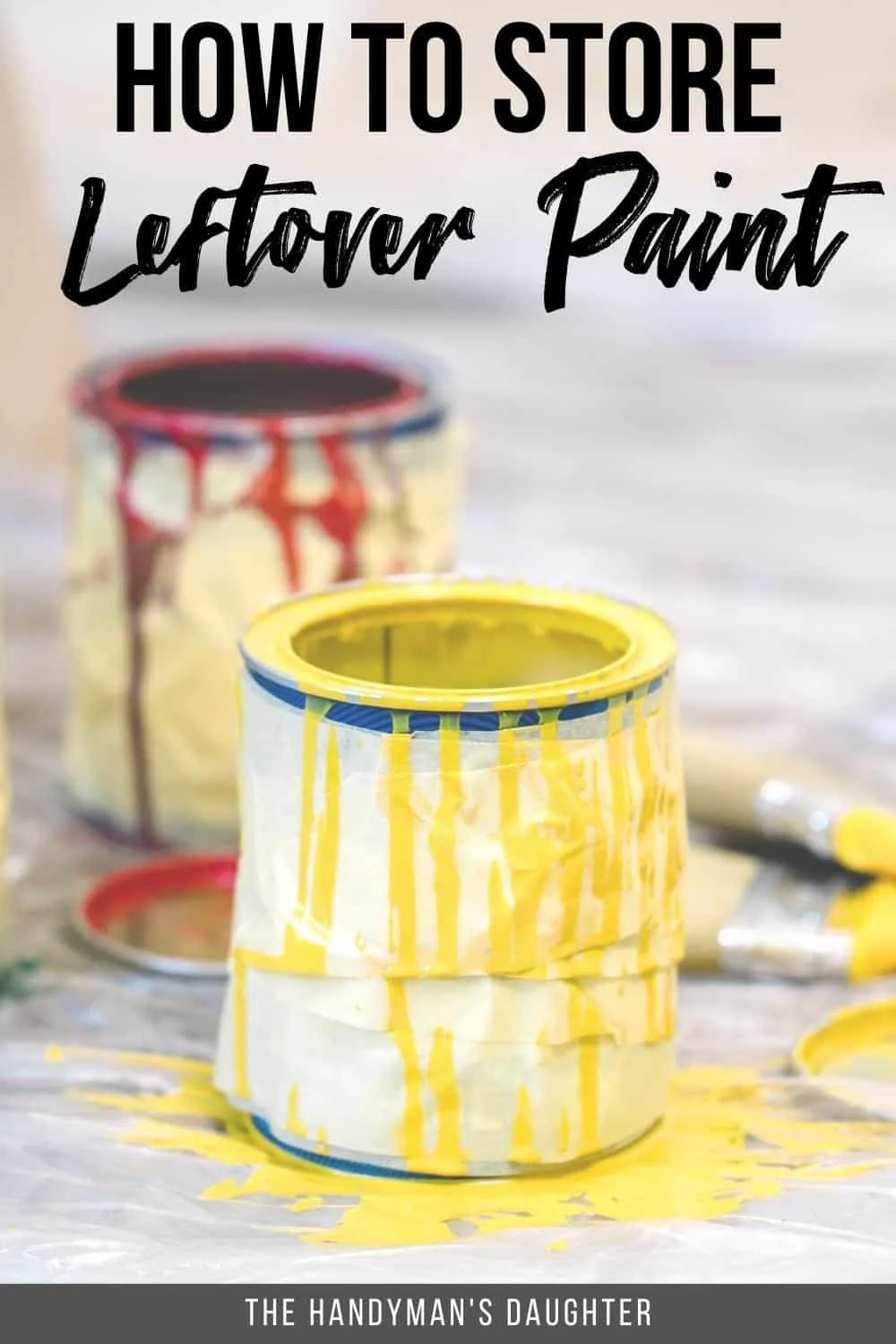
I seem to collect paint like Pokemon cards. Whenever I want to change up the look of a room, I buy a few samples before committing to a color. Then I toss all the cans and jars on a shelf in the basement and promptly forget about them!
But when you crack open those cans months or years later for a touch up, you might be in for a surprise. The old paint can dry out, separate or spoil if it's not stored properly.
So, in this article, I'll teach you how to store leftover paint. It's always a good idea to keep those colors around, especially when you want to paint straight lines between the old color and a new one. These tips should help your paint last for years, saving you time and money.
This post contains affiliate links for your convenience. Purchases made through these links may earn me a small commission at no additional cost to you. Please visit my disclosures page for more information.
Best Containers for Storing Leftover Paint
There are several reasons to choose a new paint container when storing leftover paint.
- Smaller. If you only have a quart of paint left, keeping that gallon-sized container around takes up a lot of space. A smaller container holds less air inside, leading to an extended paint lifespan.
- Clear. If you use a glass or plastic jar, you can easily see the color of the paint. No more opening every can just to find the one you're looking for!
- Seal. The rim of a metal can get damaged or filled with paint drips over time, preventing a good seal. A clean mason jar or plastic container can be sealed airtight.
With those reasons out of the way, here are several common containers for storing paint.
Mason jars
Most people have a few of these jars in their homes. You can also reuse glass jars from your fridge or pantry. Storing a rainbow of paint colors in mason jars on a shelf looks so pretty!
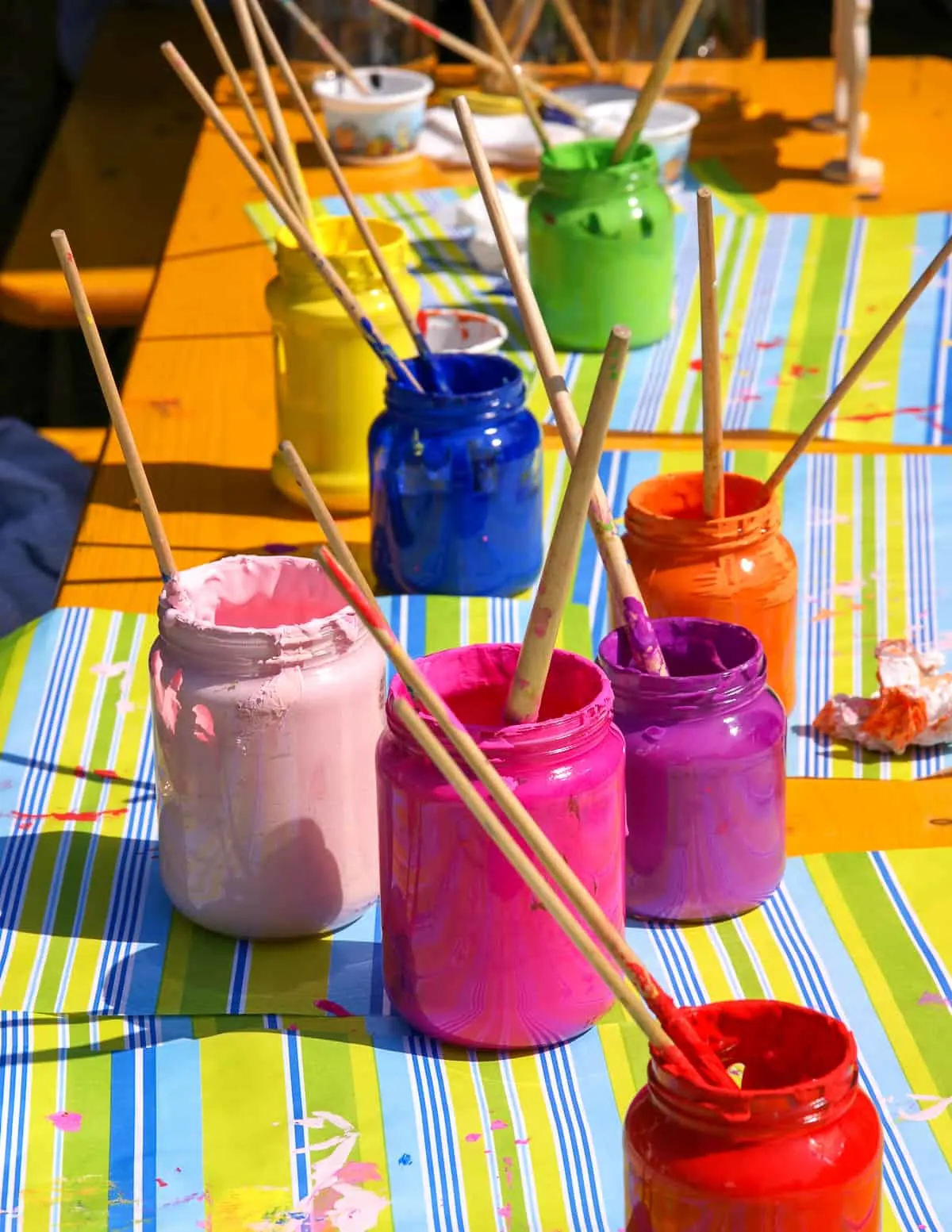
However, glass jars can fall and break, spilling paint everywhere! For something more durable, move on to the next option.
Plastic containers
Plastic works well for water-based paints. You can often buy clear plastic paint cans that will offer all the benefits of the mason jar, but they don't weigh as much and won't shatter. These ones even come with a mixing ball inside so all you have to do is give the jar a quick shake!
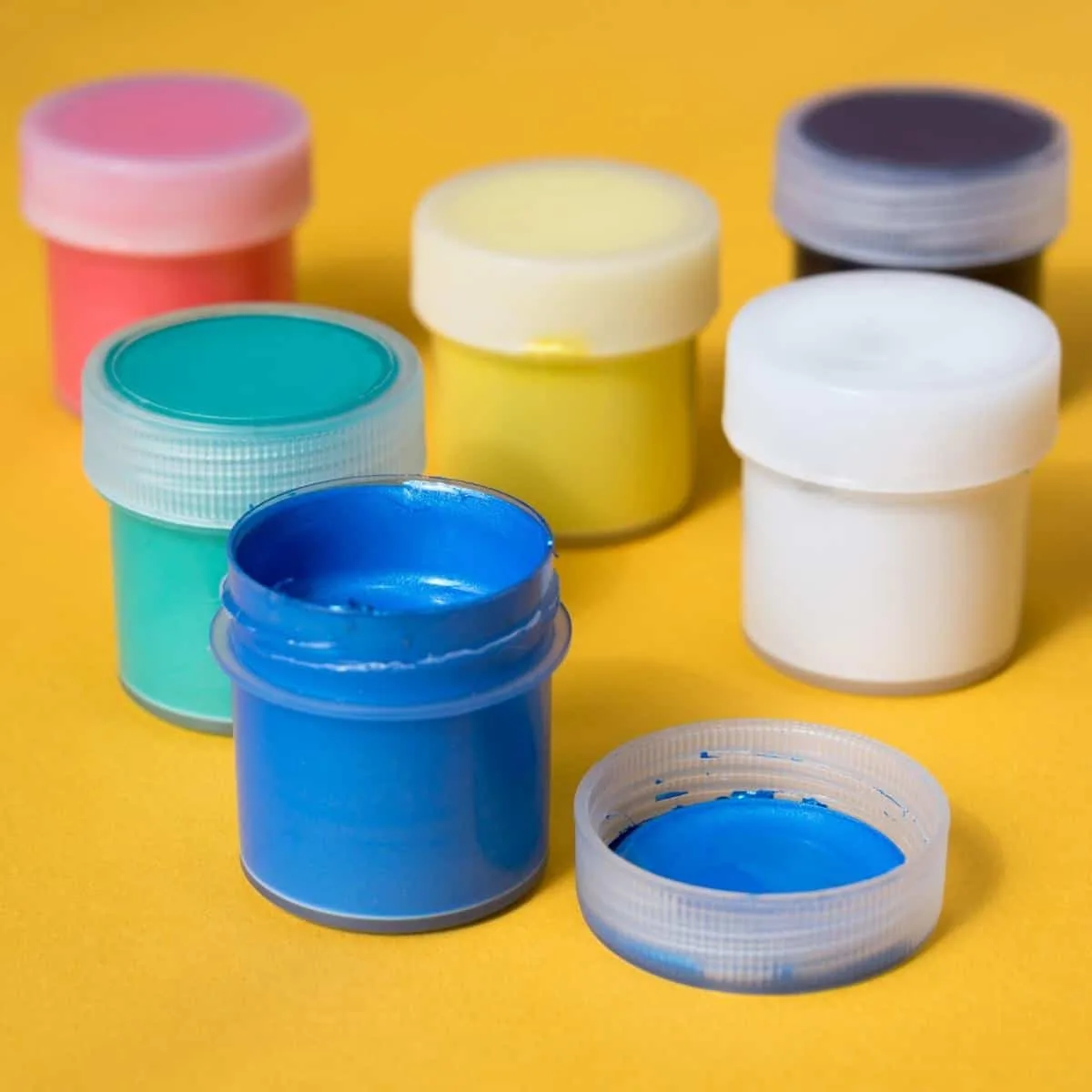
With that said, some plastic containers may not work with oil-based paints. They also might not have as tight of a seal as mason jars, which can dry out the paint quicker. Keep reading for my trick for creating a tighter seal!
Metal containers
You can also just use a new metal container. You might use this option if you're trying to transfer paint from a large 5-gallon bucket into a more manageable can.
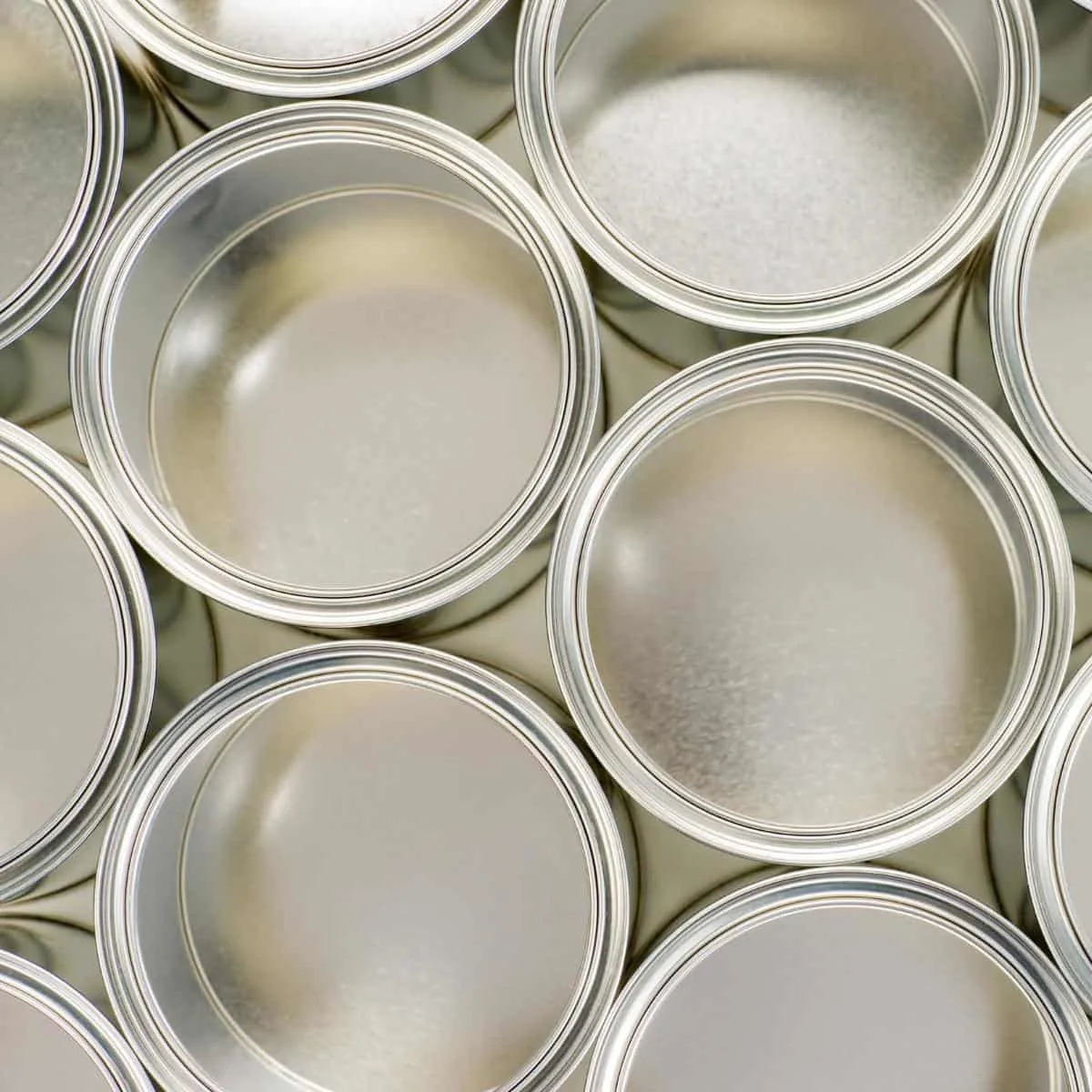
Tips to Storing Leftover Paint
So how do you transfer all that paint without making a mess, and keep it fresh for future projects? Here are some quick tips for getting the best results.
Use a Funnel or Paint Strainer
Avoid drips by using a funnel to move the paint from the large container to the smaller one. After pouring the paint, leave the funnel in place and allow the rest of the paint to drain. The goal is to avoid little strings of paint dripping on the edges of the container and ruining the seal.
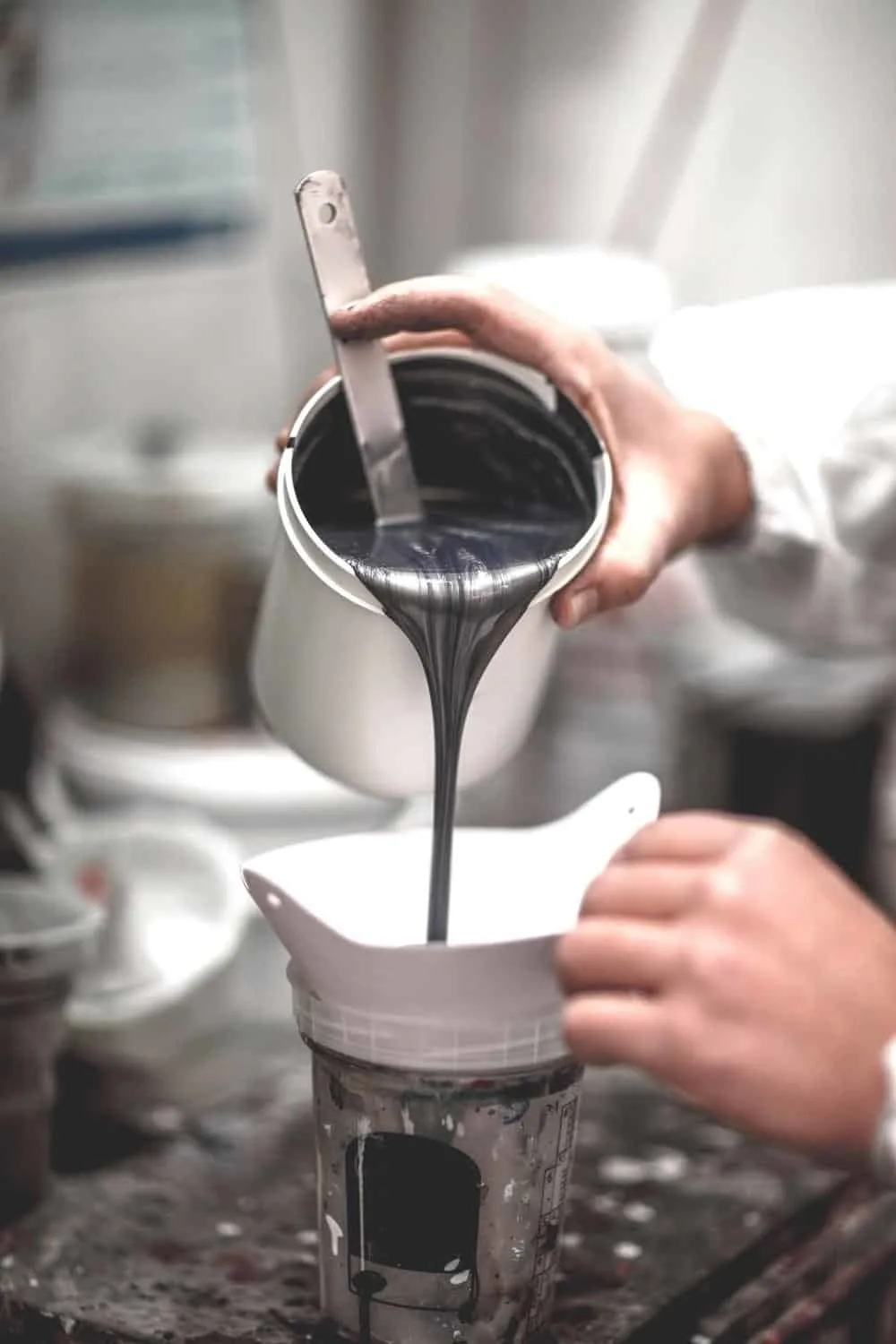
Better yet, use a paint strainer to filter your paint while you pour. This will remove any flakes or lumps of dried up paint. Trust me, there's nothing worse than discovering that loose paint brush bristle found its way onto your freshly painted surface!
Seal the Container
Sealing the paint container is critical. A good seal will make the difference between your paint lasting a while or going bad within a few weeks or months.
If you're using a clean metal paint container, be careful not to damage the edges. While it's tempting to use a regular hammer (we all have), it's better to use a rubber mallet. The rubber mallet will ensure you don't damage the edges, giving you the best seal.
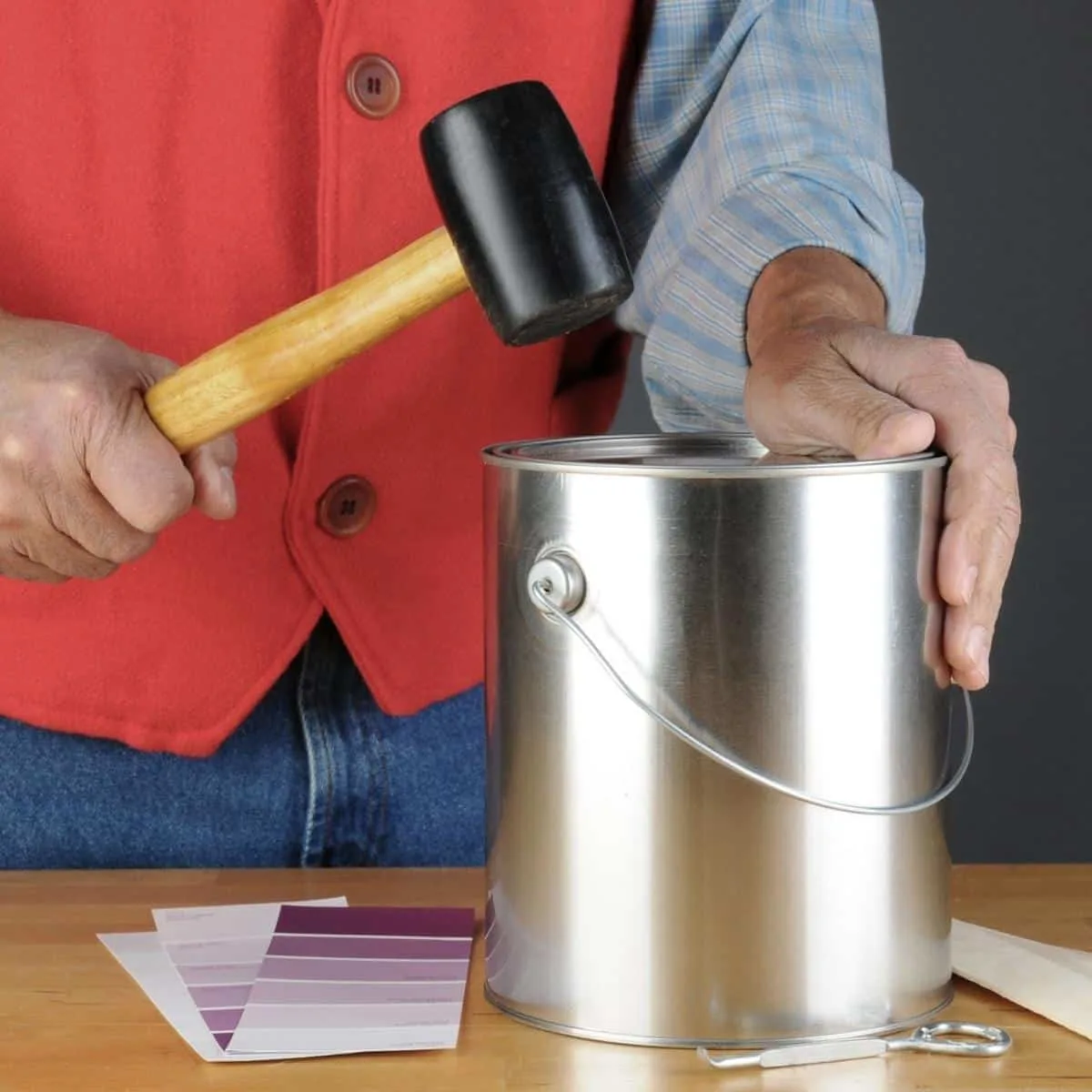
If you're using a mason jar, make sure the silicone seal on the lid is fully intact. For plastic containers, check that the threads are clean. Then tighten down the lid.
If you have a lot of room left in your smaller container, you can use plastic wrap to displace the air inside. Ball up the middle of the sheet and press it down into the jar, allowing the edges to overlap the sides (like tucking tissue paper into a gift bag). Then screw on the lid over the plastic wrap for an extra tight seal!
Label the Container
The old paint can has important information on the sticker with the color name, formulation and sheen. When you transfer the paint to a new container, make sure to copy over the details on a new label!
Here's the info to include:
- The date you used and purchased the paint
- Brand
- Name of the color
- Color number
- Finish (Gloss, Satin, Eggshell, etc.)
- Oil or water-based
- Where you used it (bedroom, furniture, etc.)
Even those little sample size jars can get out of hand if you don't label them properly. I keep all of mine organized in this box with dividers and a lid that shows the color and sheen of each jar inside.
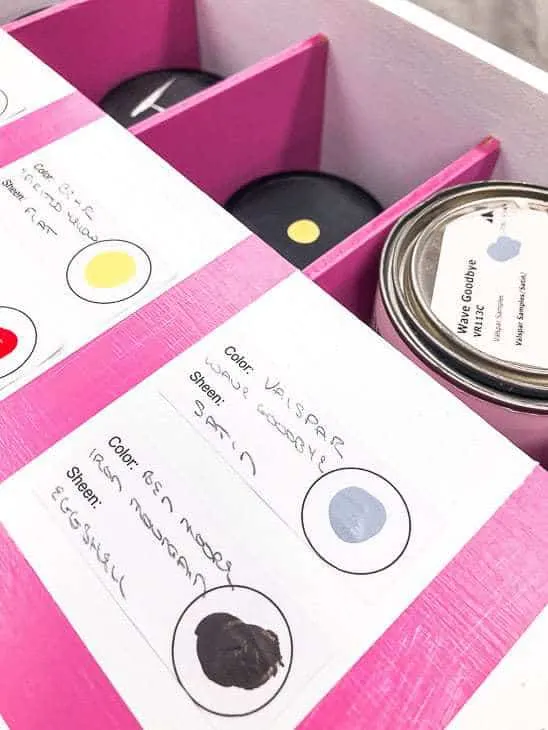
Store Leftover Paint in the Right Place
So, can we just toss our old paint out under the deck or in a damp basement and grab them next year? Maybe not.
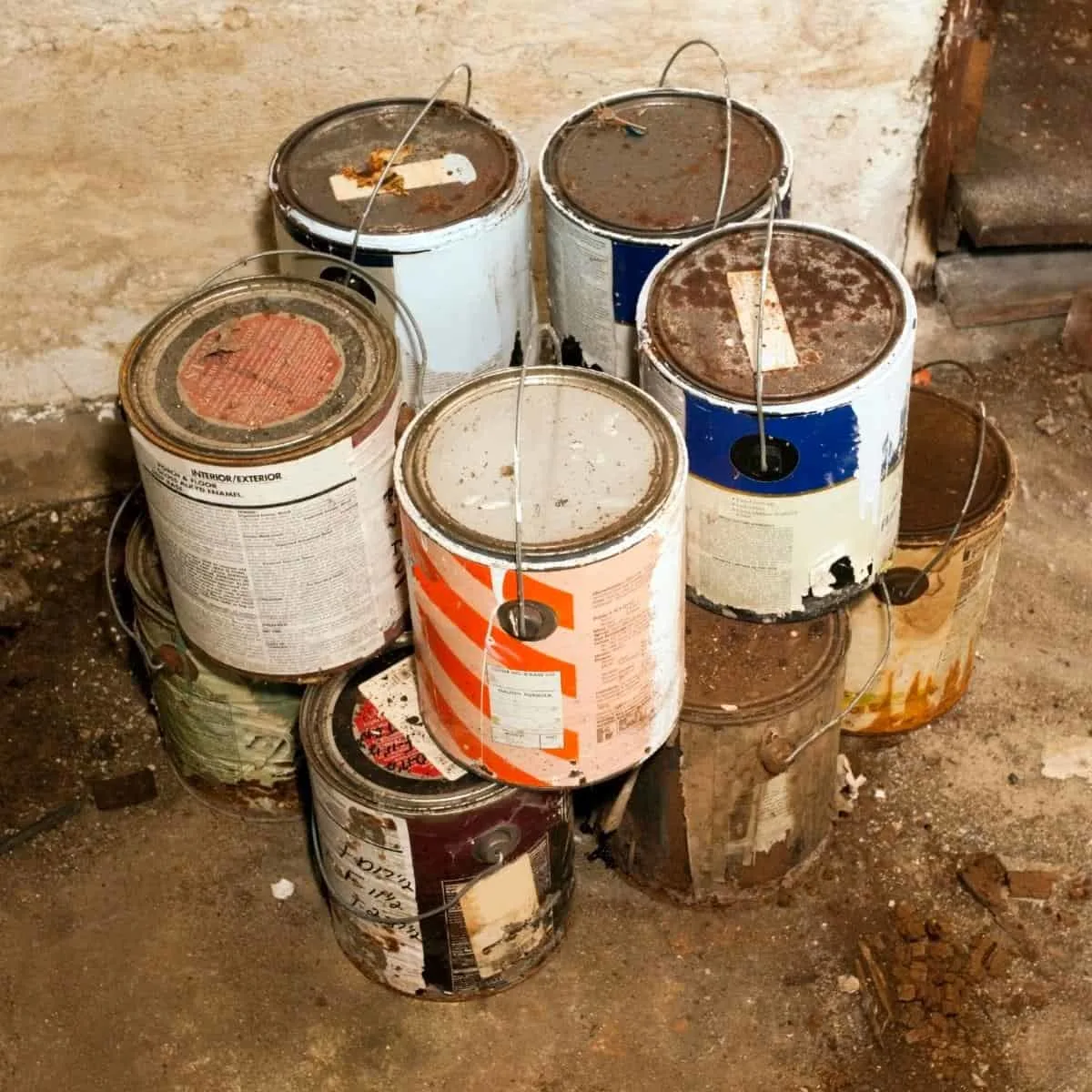
All your effort in packaging and labeling your old paint will be for nothing if you store the paint in the wrong place.
Here are a few things to consider:
- Temperature. Generally, you'll want the temperature to be stable and range from 40-70 degrees. Avoid freezing temps (especially for oil-based paint) and extreme heat. Once paint freezes, its components begin to separate.
- Light. Bright sunlight can affect the color of the paint. Too much light will start breaking things down. This is one of the drawbacks of clear jars. To combat this, store jars away from windows and light in general. Paint isn't afraid of the dark!
- Rooms. Some people choose to keep paint in the closet. This isn't a bad option, as the temperature is stable, and the room is dark. However, beware of kids and pets who might knock over cans or finger paint on the walls! For this reason, a temperature-controlled basement or garage may be the best option.
Note: Some people store paint in a shed. In warmer climates, this can work. However, where the paint will endure freezing temperatures, this isn't advised. If you must store paint in an unheated outdoor structure, keep the paint away from bright windows and cold concrete floors.
Paint Shelf Life
Even if you take all precautions, the paint won't last forever. Most paints last about two years after you open the container. This is a rule of thumb, but you might find that some paints spoil faster or last longer.
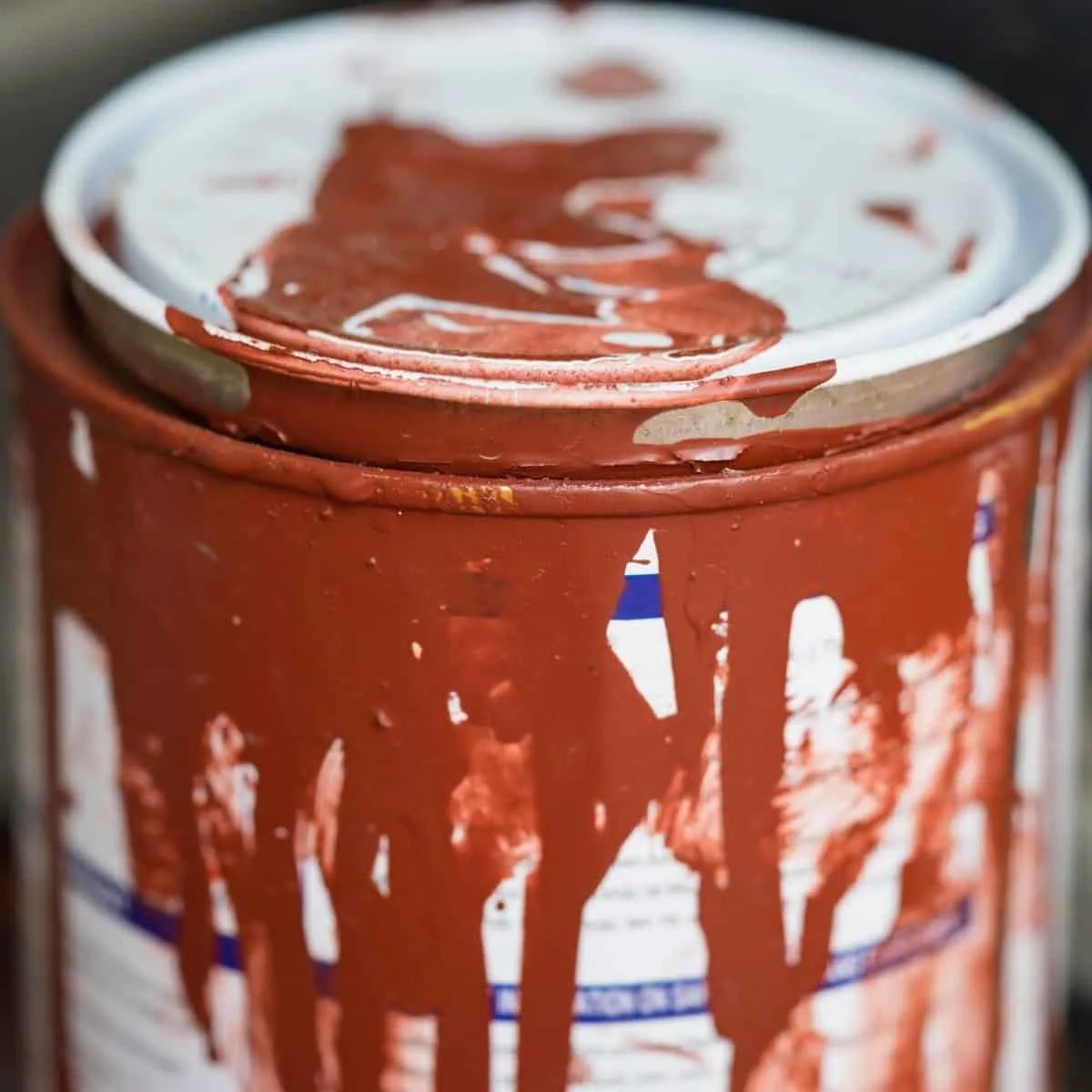
How to tell if your paint has gone bad
- Dry? If you open the container and the paint is completely dry, you probably aren't going to revive it by adding water.
- Lumpy? If the paint is lumpy, it's probably nearing the end. However, you may be able to stir some of these out or use a paint strainer to filter them out.
- Skin? If there's a thin skin over the top of the surface, you can try to fish it out. Inspect the remaining paint to see if it's still usable.
- Smell? If the paint has a foul odor, it's probably time to chuck it. Usually, the smell is pungent, some say like rotten eggs. No one wants that in their house!
How to dispose of old paint
You shouldn't just toss any old paint can in the trash! Oil-based primer and paint is considered hazardous waste, and should be disposed of properly. Check with your local waste disposal for drop off locations near you.
If your latex paint can isn't completely empty or hardened, you'll need to absorb the liquid before putting it in the trash. You can pour kitty litter in the can, or use a paint hardener to dry it out quickly.
If your paint still has some life left in it, but you don't think you're going to reuse it, you can try to donate it or have it recycled. Habitat for Humanity sometimes takes paint donations, and your local community might have a recycling program for paint.
How to Make Paint Last Longer
The way you use new paint can affect how long it lasts. There are a few little mistakes that are easy to correct.
- Open the can correctly. Use a dedicated paint can opener instead of a screwdriver. You can usually get these for free when you buy your paint, so grab one! Damaging the lid will allow air to get into the can, drying it out faster.
- Don't paint directly from the can. Unless it's a tiny container, pour the paint into a smaller cup or tray and close the lid tightly with a mallet. The longer the paint is exposed to the air, the faster it will go bad.
- Use tape or a paint pour funnel. This will drastically reduce the build-up of paint in the rim of the can. Not only will this keep your paint cans looking nice, but it will also give you a better seal.
It's always smart to save leftover paint for touch ups or another project. Now that you know how to store leftover paint properly, you'll be able to use it for years to come!


